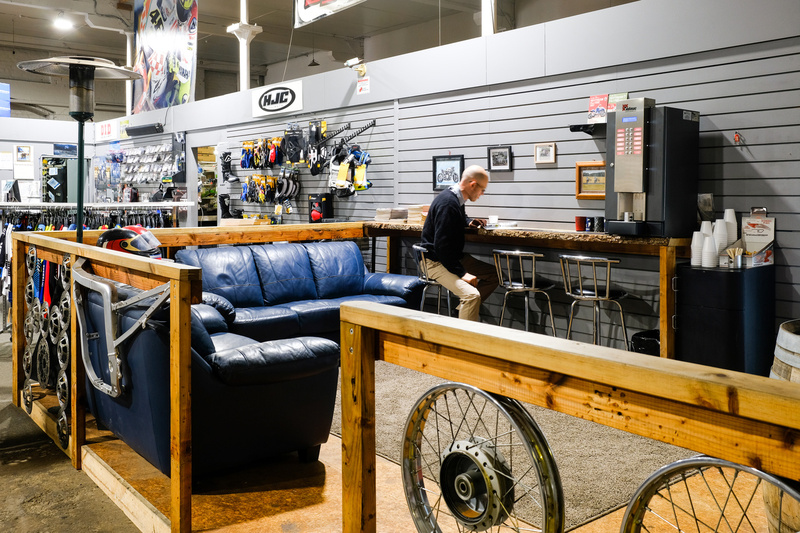Check Out Our Motorcycle Shop for Professional Guidance and Quality Products
Check Out Our Motorcycle Shop for Professional Guidance and Quality Products
Blog Article
Understanding Motorcycle Gears: Exactly How to Maximize Your Riding Experience
In the realm of motorcycling, grasping the art of gear control is crucial for improving your riding performance. Effectively using and understanding bike gears can substantially affect acceleration, control, and fuel performance, transforming a typical ride right into a seamless, thrilling trip.
Comprehending Gear Mechanics
How do the intricacies of equipment technicians affect motorbike performance? At the core of bike dynamics, gear auto mechanics play a crucial role in transforming engine power into movement, inevitably dictating speed and control. Gears, carefully crafted elements, enable riders to optimize torque and rate, making certain a smooth transition via various surfaces and velocities. The gear ratios, very carefully made, identify the relationship in between engine changes and wheel turns, affecting velocity and gas efficiency.
Understanding equipment auto mechanics begins with recognizing the importance of the transmission, which houses several gears of varying dimensions. These equipments engage with a process called meshing, where teeth of various gears engage to transmit power. The precision of this communication is crucial; any imbalance or damage can bring about inefficient power transfer, impeding efficiency. Additionally, the plan and dimension of gears influence the motorbike's capacity to deal with various loads and rates.
Moreover, the concept of gear changing is important to maximizing performance. Prompt and smooth changes ensure that the engine operates within its ideal power band, protecting against unnecessary stress and boosting long life (moto parts nz). By comprehending these mechanical complexities, motorcyclists can attain an unified mix of control, performance, and power, boosting their riding experience
Timing Your Changes
Change timing proficiency is crucial for maximizing motorbike performance and enhancing the riding experience. Properly timed changes guarantee that the engine runs within its ideal power band, which is important for keeping control, attaining smooth acceleration, and making certain the longevity of the motorcycle. Bikers must develop an intuitive feeling of when to change equipments, which includes understanding the relationship in between engine changes per min (RPM) and speed.
To master change timing, pay close interest to the engine's noise and feel, as these give essential clues about when to transform equipments. The suitable shift factor commonly happens when the engine approaches the top variety of its power band without getting to the redline. Shifting as well early can lead to a lack of power, while changing as well late might create unnecessary engine pressure
Furthermore, roadway conditions and riding design impact change timing. As an example, in urban settings, smoother and much more constant shifts may be necessary to browse traffic successfully. On the other hand, throughout highway riding, less changes at higher speeds can be better suited. Exercising in diverse atmospheres will certainly boost your capability to time changes specifically, inevitably elevating your riding experience to a specialist level.
Enhancing Fuel Effectiveness
While grasping bike equipments is vital for efficiency, enhancing fuel effectiveness is just as vital for both environmental and economic reasons. Optimum gas intake not just reduces operational expenses however likewise lessens the eco-friendly footprint of riding. To achieve this, one should comprehend the intricate relationship in between gear selection and engine efficiency.
Firstly, picking the best equipment at suitable speeds can considerably affect fuel consumption. Riding in a higher gear at lower speeds can result in engine lugging, which is damaging to both fuel economic climate and engine health and wellness. On the other hand, riding in lower gears at broadband causes unneeded fuel motorcycle gas tank repair near me consumption. Thus, maintaining an optimum equilibrium by moving gears abreast with roadway conditions and anticipated maneuvers is important.
In addition, routine maintenance plays a critical role in gas effectiveness. Making sure that the motorcycle is well-tuned, with tidy air filters and appropriately pumped up tires, can enhance the rules of aerodynamics and minimize fuel wastefulness. Taking on a riding style that welcomes progressive velocity and smooth deceleration can add to far better fuel economic situation.

Strategies for Smooth Transitions
Achieving smooth equipment transitions is basic to enhancing the riding experience and making sure the durability of a motorbike's transmission system. Appropriate gear moving not just adds to a seamless trip yet also lessens wear and tear on the mechanical elements. To understand the art of smooth transitions, bikers should focus on a couple of key methods.

Second of all, clutch control plays a pivotal duty. Engaging and disengaging the clutch smoothly calls for method. The clutch bar need to be released progressively, enabling a seamless transfer of power from the engine to the wheels without triggering a jolt or abrupt motion.

Adapting to Road Problems
Browsing diverse road problems is an essential ability for any kind of motorcyclist intending to preserve control and safety. Whether you're riding on damp surfaces, gravel roadways, or navigating sharp turns, your capacity to adjust your gear use and riding method is critical. Understanding exactly how to change your gears suitably can significantly impact grip and stability, making certain a much safer journey.
On wet roads, it is recommended to maintain greater equipments to minimize torque and lessen wheel spin. This technique aids preserve grip on unsafe surfaces, permitting for smoother acceleration and slowdown. On the other hand, when riding on crushed rock or unequal surface, lower equipments are more suitable. Reduced gears provide far better control and allow you to react more quickly to unexpected modifications in the roadway surface.
Sharp contours demand accurate gear monitoring to balance rate and control. Downshifting before going into a contour can help preserve energy while ensuring the motorcycle stays secure throughout the turn. Consistent practice in different problems enhances your ability to anticipate and react to changes in road structure and slope.
Conclusion
Understanding bike gears substantially improves the riding experience by improving control, acceleration, and gas efficiency. Adjusting equipment choice to various roadway problems, such as utilizing higher equipments on damp surfaces and reduced equipments on gravel, more boosts handling and safety and security.
Understanding equipment auto mechanics begins with identifying the relevance of the gearbox, which houses multiple equipments of varying dimensions. These gears interact via a process known as meshing, where teeth of various gears involve to transmit power (motorbike shop). Gentle changes to the throttle during equipment changes can prevent jerky activities and maintain a regular riding pace
Whether you're riding on damp surfaces, crushed rock roadways, or navigating sharp turns, your capacity to adapt your equipment usage and riding strategy is vital. Adjusting gear choice to different road problems, such as using greater equipments on wet surface areas and lower Find Out More gears on crushed rock, further improves handling and security.
Report this page